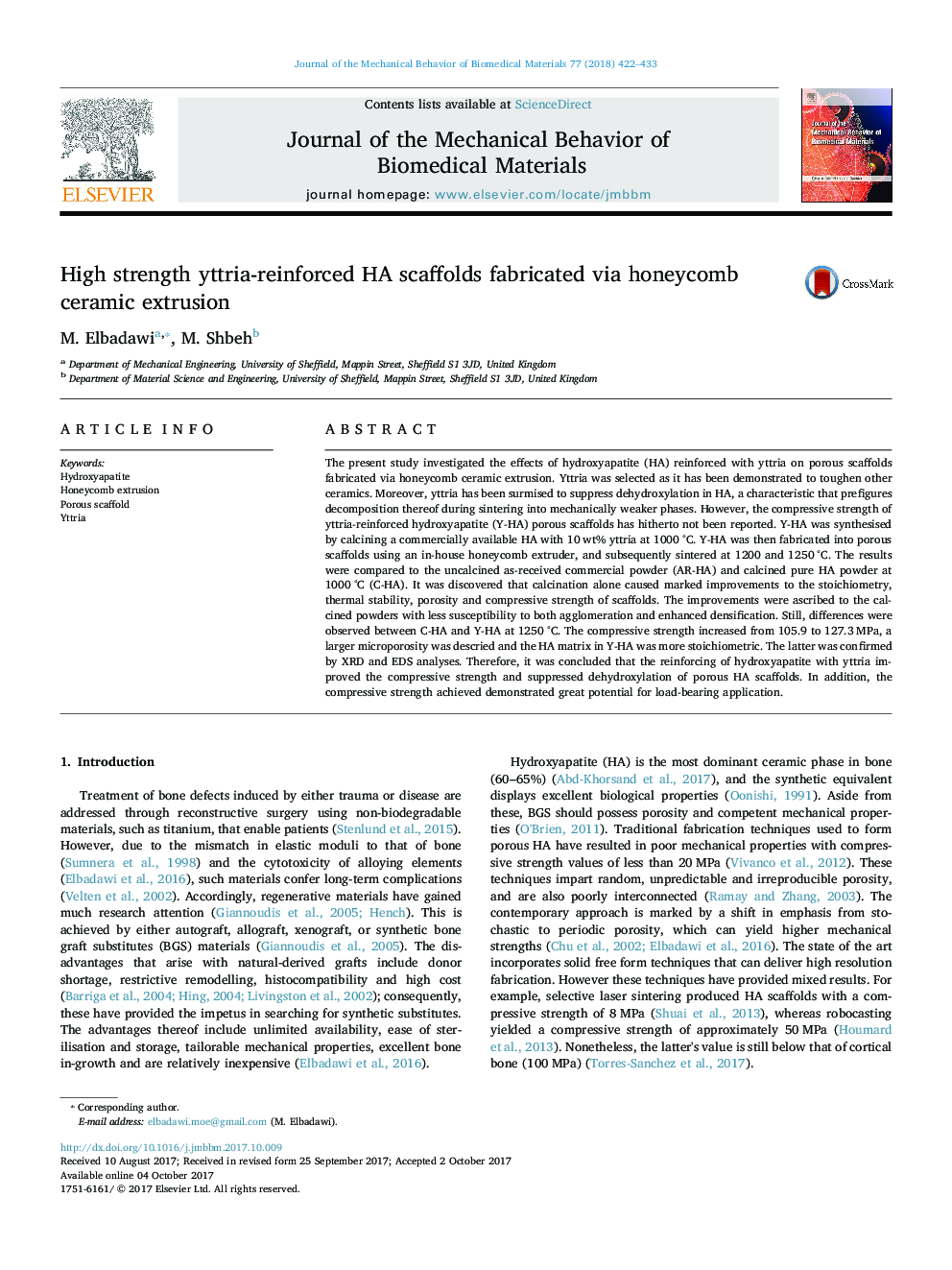| Article ID | Journal | Published Year | Pages | File Type |
|---|---|---|---|---|
| 5020373 | Journal of the Mechanical Behavior of Biomedical Materials | 2018 | 12 Pages |
The present study investigated the effects of hydroxyapatite (HA) reinforced with yttria on porous scaffolds fabricated via honeycomb ceramic extrusion. Yttria was selected as it has been demonstrated to toughen other ceramics. Moreover, yttria has been surmised to suppress dehydroxylation in HA, a characteristic that prefigures decomposition thereof during sintering into mechanically weaker phases. However, the compressive strength of yttria-reinforced hydroxyapatite (Y-HA) porous scaffolds has hitherto not been reported. Y-HA was synthesised by calcining a commercially available HA with 10 wt% yttria at 1000 °C. Y-HA was then fabricated into porous scaffolds using an in-house honeycomb extruder, and subsequently sintered at 1200 and 1250 °C. The results were compared to the uncalcined as-received commercial powder (AR-HA) and calcined pure HA powder at 1000 °C (C-HA). It was discovered that calcination alone caused marked improvements to the stoichiometry, thermal stability, porosity and compressive strength of scaffolds. The improvements were ascribed to the calcined powders with less susceptibility to both agglomeration and enhanced densification. Still, differences were observed between C-HA and Y-HA at 1250 °C. The compressive strength increased from 105.9 to 127.3 MPa, a larger microporosity was descried and the HA matrix in Y-HA was more stoichiometric. The latter was confirmed by XRD and EDS analyses. Therefore, it was concluded that the reinforcing of hydroxyapatite with yttria improved the compressive strength and suppressed dehydroxylation of porous HA scaffolds. In addition, the compressive strength achieved demonstrated great potential for load-bearing application.
Graphical abstractDownload high-res image (162KB)Download full-size image
